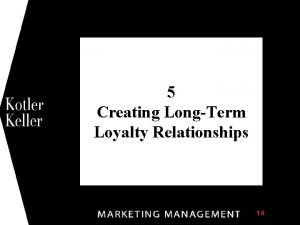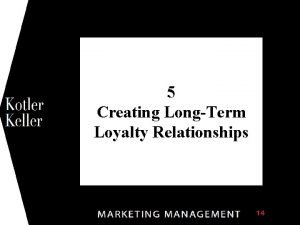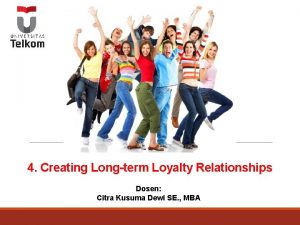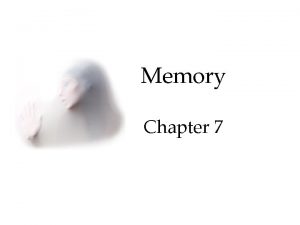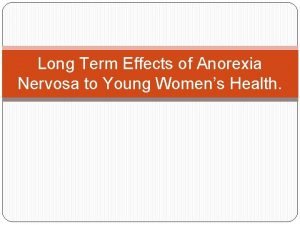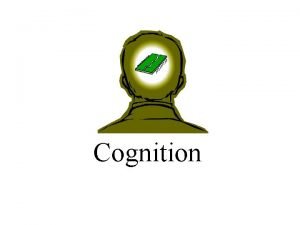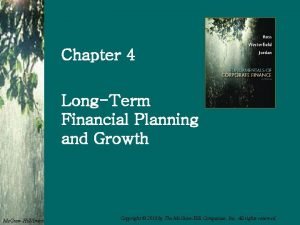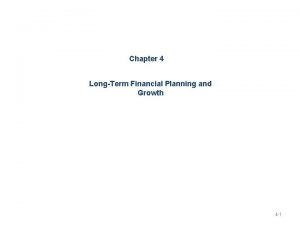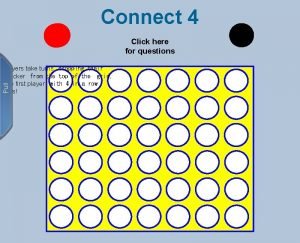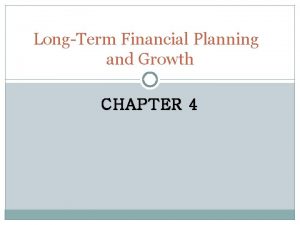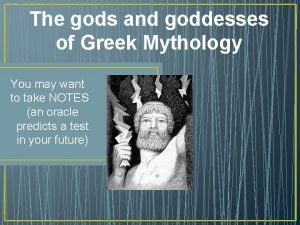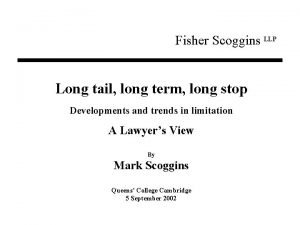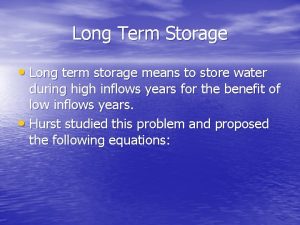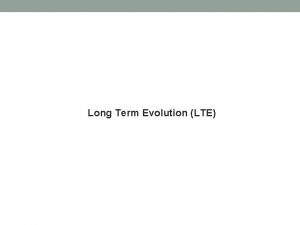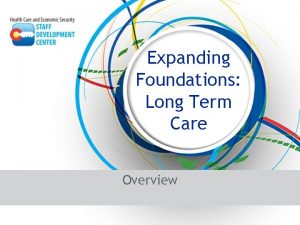RELATIONSHIPS And Love LONG TERM RELATIONSHIPS Exchange relationships





























- Slides: 29

RELATIONSHIPS And Love

LONG TERM RELATIONSHIPS Exchange relationships � the need for equity (equal ratio of) rewards and costs repaid immediately for favours feel exploited when favours are not returned keep track of who is contributing what to the relationship helping the other person has no effect on our mood Communal relationships � primary concern: being responsive to the other person's needs. do not like to be repaid immediately for our favours do not feel exploited when favours are not repaid do not keep track of who is contributing what to the relationship helping the person puts us in a good mood

ESTABLISHING A RELATIONSHIP

INTIMACY Dimensions: � Physical intimacy hugs, kisses, and physical closeness � Intellectual intimacy exchange of important ideas, values and beliefs � Emotional intimacy exchange of important feelings. � Shared activities everything from working side-by-side at a job to meeting regularly for exercise workout

REWARDS Semi-Economic Model (social exchange theory) � We often seek out people who can give us rewards, either tangible or emotional, that are greater than or equal to the costs we encounter in dealing with them. � Rewards: any outcomes we desire � Rewards - Costs = Outcome � Comparison level: what behaviours are acceptable � Comparison level of alternatives: rewards received in the present situation versus other rewards that could be expected to receive in others. � Interpersonal Resources: love, status, information, money, goods, and services

EQUITY Equity Theory � Concerned about equity in their relationships, � Rewards, costs, and contributions to the relationship are roughly equal to the rewards, costs, and contributions of the other person

EQUITY - CONTINUED Confirming and Valuing � Communication climate, or the emotional tone of a relationship, is the key to positive relationships. � Tone of a relationship: degree to which people believe themselves to be valued by one another. � Confirming describes messages that convey valuing

ESTABLISHING AND MAINTAINING RELATIONSHIPS

PROCESS MODELS Rules Shared opinions or beliefs about what should or should not be done � two major functions of rules � regulate behaviour to minimize potential sources of conflict check on the exchange of rewards that motivate people to stay in relationships � Rules that apply to most relationships respecting other people's privacy not discussing what has been said in confidence emotionally supportive � Additional rules apply in particular types of relationships, called clusters. spouse, sibling and close friends doctor, teacher and boss � Deception - the most important rule that should not be broken

PROCESS MODELS CONTINUED Filter Theory � Relationships pass through a series of filters. � First Filter: similarity of ethnic, racial, religious and social class groups determines the likelihood of people meeting in the first place � Our choice of friends/partners is made for us because the field of availables (the range of people who are realistically available for us to meet) � Second Filter: People's psychological characteristics and, specifically, agreement on basic values. best predictor of a relationship becoming more stable and permanent. � Third Filter: Complementarity of emotional needs was the best predictor of a longer term commitment

ATTACHMENT MODELS Infants form one of three basic attachments to the caregiver. Crucial feature - caregiver’s sensitivity � The sensitive caregiver sees things from the baby’s perspective, correctly interprets its signals, responds to its needs, and is accepting, cooperative and accessible. Securely Attached Babies � The insensitive caregiver interacts almost exclusively in terms of their own wishes, moods and activities. Insecurely Attached Babies (anxious-avoidant or anxious-resistant)

Anxious-avoidant 15% Typical behaviour: Baby largely ignores caregiver. Play is little affected by whether caregiver is present or absent. No or few signs of distress when caregiver leaves, and actively ignores or avoids caregiver on return. Distress is caused by being alone, rather than being left by the caregiver. Can be as easily comforted by a stranger as by the caregiver. In fact, both adults are treated in a very similar way. Securely attached 70% Typical behaviour: Baby plays happily while the caregiver is present, whether the stranger is present or not. Caregiver is largely ‘ignored’ because the baby trusts that care will be provided if needed. Clearly distressed when caregiver leaves and play is considerably reduced. Seeks immediate contact with caregiver on return, is quickly calmed down and resumes play. The distress is caused by the caregiver’s absence, not being alone. Although the stranger can provide some comfort, stranger and caregiver are treated very differently. Anxious-resistant 15% Typical behaviour: Baby is fussy and wary while the caregiver is present. Cries a lot more and explores much less than other two types and has difficulty in using caregiver as a safe base. Very distressed when caregiver leaves, seeks contact on return, but simultaneously shows anger and resists contact (may approach caregiver and reach out to be picked up, but then struggles to get down again). This demonstrates the baby’s ambivalence towards the caregiver. Does not return readily to play. Actively resists stranger's efforts to make contact.

STAGE MODELS Knapp’s Model � broad phases of “coming together” and “coming apart”. � descriptive of intimate, romantic relationships and close friendships 1. Initiating: Expressing interest in making contact and showing that you are the kind of person worth getting to know. 2. Experimenting: uncertainty reduction - the process of getting to know others by gaining more information about them. 3. Intensifying: Interpersonal relationships now begin to emerge. Feelings about the other person are now openly expressed, forms of address become more familiar, commitment is now openly expressed, and the parties begin to see themselves as “we” instead of separate individuals.

4. 5. 6. 7. 8. 9. 10. Integrating: Identification as a social unit. Social circles merge. Partners develop unique, ritualistic ways of behaving. Obligation to the other person increases. Some personal characteristics are replaced and we become different people. Bonding: The parties make symbolic public gestures to show society that their relationship exists (rings, tokens, marriage). Differentiating: The need to re-establish separate identities begins to emerge. The key to successful differentiation is maintaining a commitment to the relationship while creating the space for autonomy and individuality. Circumscribing: Communication between the partners decreases in quantity and quality. It involves a certain amount of shrinking of interest and commitment. Stagnating: No growth occurs. Partners behave toward each other in old, familiar ways without much feeling. Avoiding: The creation of physical, mental and emotional distance between the partners. Termination: In romantic relationships the best predictor of whether the parties will become friends is whether they were friends before their emotional involvement.

MR. D’S TEN STEPS FOR DATING Step 1: Find the person you like and find a way to tell them (e. g. send a note through a friend). Step 2: Invite the person you like to a party or on a date – with your parents and theirs. Step 3: Go on the date with the parents and the person you like. If you have to, you can hold hands with the person. Step 4: After the first date, you’re allowed to go on a date without your parents – but you can still only hold hands. Step 5: On the next date, you can hug the person – once, at the end of your date, but not too close.

MR. D’S TEN STEPS FOR DATING Step 6: The next time you see the person, you’re allowed to kiss – on the forehead. That’s it. Also, you must apply the three-second rule. Step 7: On your next date, you can kiss the person on the cheek – five seconds, max – but then you have to stop and go home. Step 8: Next time, you can kiss on the lips – but no tongue. Step 9: Next, you can hug and kiss at the same time. Step 10: You’ve gone too far. Break up. Go find someone else and start again at Step 1.

STAGE MODELS - CONTINUED Stimulus-Value Role Theory � Stimulus stage Attraction is based on external attributes � value stage Similarity of values and beliefs becomes more important � Role stage Commitment based on successful performance of relationship roles, such as husband wife

STAGE MODELS - CONTINUED Levinger’s Model � Five Stages Acquaintance or initial attraction Consolidation or continuation Deterioration Decline Ending � At each stage, there are positive factors that promote the relationship's development and corresponding negative factors that prevent its development or cause its failure

RELATIONSHIPS MATURITY Three Levels � Self-Focused The individual’s own wishes and plans overshadows those of others, and the individual shows little concern for others. � Role-Focused Perspective is stereotypical and emphasizes social acceptability. Individuals at this level know that acknowledging and respecting another is part of being a good friend or a romantic partner. � Individuated-Connected one begins to understand oneself, as well as to have consideration for others’ motivations and to anticipate their needs.

UNSATISFYING RELATIONSHIPS Best Predictor of Breakup Experience = the role you play in it � Initiator of Breakup (“The Dumper”) – less upset, less stressed, more feelings of guilt/unhappiness, less physical symptoms (headaches, irregular eating or sleeping) � Non-Initiator of Breakup (“The Dumped”) – more miserable; high levels of loneliness, depression, unhappiness, and anger; more physical symptoms (even weeks later)

CULTURE Individualism places greater emphasis on personal achievement and self-reliance. Collectivism places priority on the welfare and unity of the group. In cultures where arranged marriages occur, the relationship between love and marriage is the other way around, and marriage is seen as the basis on which to explore a loving relationship. The cultural background in which people have learned about love is important in shaping their concept of it.

DISSOLUTION OF RELATIONSHIPS Lee’s Model � Five Stages dissatisfaction is discovered Dissatisfaction is then exposed Some sort of negotiation about the dissatisfaction occurs Attempts are made to resolve the problem Relationship is terminated

DISSOLUTION - CONTINUED Duck’s Model � Four Phases Intrapsychic phase Unable to stand the relationship – Relationship under review (good vs. bad), no action taken yet Feeling justified in withdrawing from relationship Dyadic Phase Decide to confront the partner (or not) Decide whether to repair it or end it Social Phase Public announcement – saving face/blame-placing Friends and family provide support End is inevitable Grave-Dressing Phase Grieving and “getting over it”

DISSOLUTION - CONTINUED Exit-Voice-Loyalty-Neglect Model � Four Responses to Relationship Dissatisfaction Exit Leaving the relationship Active strategy Destructive Neglect Ignoring the relationship Passive strategy Destructive Voice Articulating concerns Active strategy Constructive Loyalty Staying in the relationship and accepting the other's behaviour Passive strategy Constructive

ATTRACTION Similarity Mutual Attraction Gain-Loss Effect (person likes you more now) Competence Disclosure Proximity Physical Attraction Reinforcement-Affect Model (person makes you feel good about yourself)

INTIMACY The two people interact more often for a longer time and in more situations than do less intimate friends or acquaintances. When apart, they attempt to restore proximity. They “open up to each other”, revealing secrets, feelings, praise and criticism. They develop their own ways of communicating. Each develops the ability to anticipate how the other will behave and feel. Their behaviours and goals become synchronized not identical, but they do not get in each other’s way. Each becomes increasingly invested in the relationship. Increasingly, the self-interest of each depends on the well-being of the relationship. They see the relationship as virtually irreplaceable and unique. They tend to relate to others as a pair, or couple. They like, love and trust each other

INTIMATE INTERACTION Young Adults show five different styles/types of intimate interaction: � Intimate � Preintimate � Superficial relationships that tend to be dominated by friendship ties with same-sex rather than opposite-sex individuals. Pseudointimate � Mixed emotions about commitment, an ambivalence that is reflected in the strategy of offering love without obligations or longlasting bonds. Stereotyped � One or more deep and long-lasting love relationships. Long-lasting sexual attachment with little or no depth or closeness. Isolated Withdraws from social encounters and has little or no social contact with same- or opposite-sex individuals

LOVE Many forms � one's mate � brother or sister � Child � parent or grandparent � Friend � Country Can evolve or change over time Three Components of Love � Intimacy � Passion � Decision/commitment

TYPES OF LOVE Liking � intimacy in the absence of passion or decision/commitment � refers to friendships in which one feels closeness, bondedness and warmth toward the other Infatuation � passion without intimacy or decision/commitment. Romantic � combination of intimacy and passion without commitment Companionate � intimacy and decision/commitment in which the passion has subsided.
 Short medium and long term planning in education
Short medium and long term planning in education Short term hr planning
Short term hr planning Difference between long term and short term liabilities
Difference between long term and short term liabilities Long-term liabilities examples
Long-term liabilities examples Long term goals examples for freshers
Long term goals examples for freshers Short-term financial management
Short-term financial management Love love jesus is love god greatest gift lyrics
Love love jesus is love god greatest gift lyrics Long term memory vs short term memory
Long term memory vs short term memory Tall + short h
Tall + short h Once upon a time there lived an old man
Once upon a time there lived an old man Creating long term loyalty relationships
Creating long term loyalty relationships Creating long term loyalty relationships
Creating long term loyalty relationships Creating long term loyalty relationship
Creating long term loyalty relationship Real exchange rate formula
Real exchange rate formula Voluntary exchange
Voluntary exchange Gas exchange key events in gas exchange
Gas exchange key events in gas exchange The salvation of man is through love and in love
The salvation of man is through love and in love That you must love me and love my dog summary
That you must love me and love my dog summary Long term storage and retrieval
Long term storage and retrieval Long term effects of anorexia nervosa
Long term effects of anorexia nervosa Long term storage and retrieval
Long term storage and retrieval Long term objectives and strategies
Long term objectives and strategies Long-term debt preferred stock and common stock
Long-term debt preferred stock and common stock Long term financial planning and growth chapter 4
Long term financial planning and growth chapter 4 Long term financial planning and growth chapter 4
Long term financial planning and growth chapter 4 What is long term loans and advances
What is long term loans and advances To establish effective short- and long-term goals ____.
To establish effective short- and long-term goals ____. Long term financial planning and growth
Long term financial planning and growth Tinikling is a bird with long legs and a long neck
Tinikling is a bird with long legs and a long neck Greek
Greek










